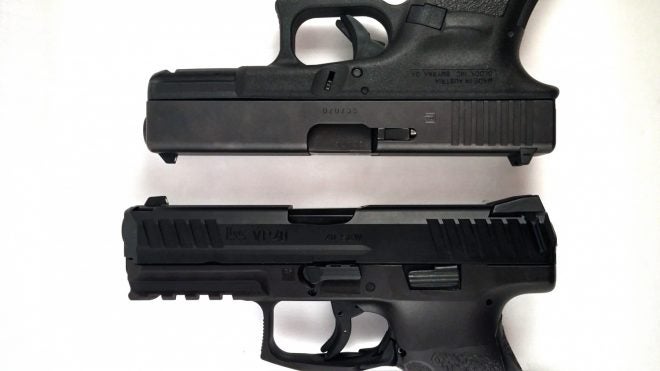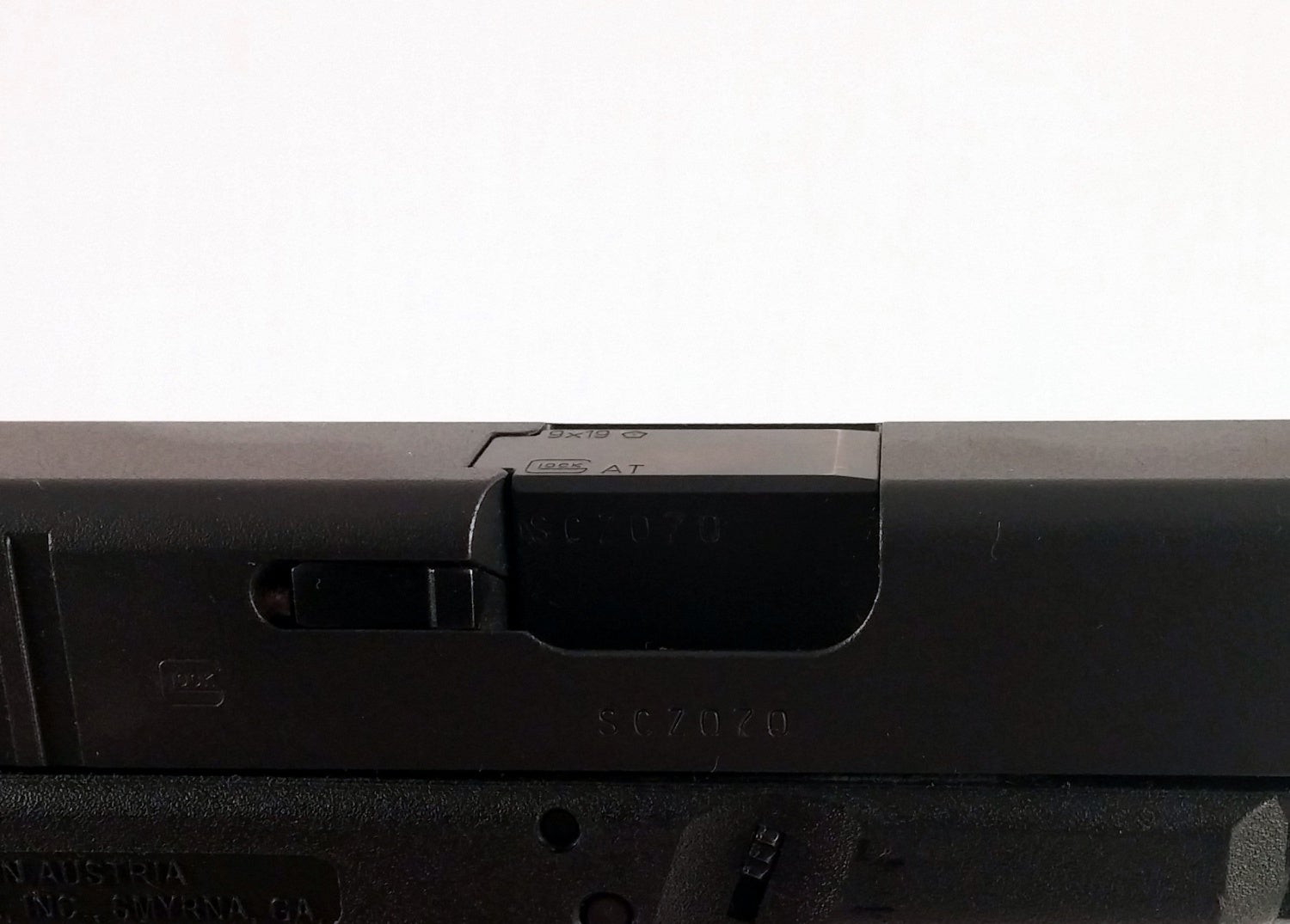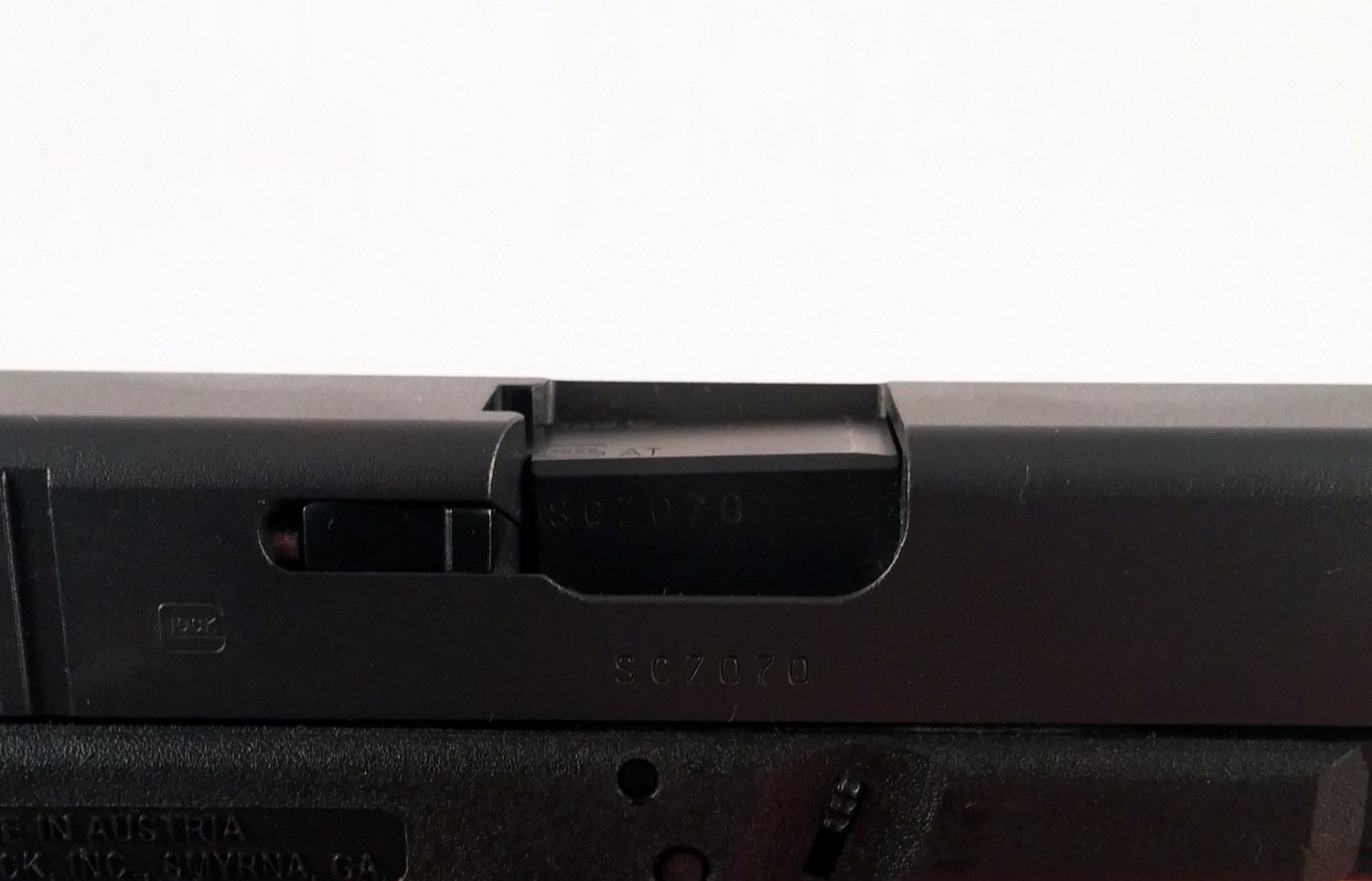Previously, we looked at the most common type of locking mechanism for rifles, but what about handguns? Well, today we’ll be looking at tilting-barrel locking, a method used in virtually every modern locked-breech handgun today.
Tilting barrel locking was invented by that Utahn gun maestro, John Moses Browning, as an evolution of a translating barrel mechanism he had invented earlier. The principle is simple: Create surfaces on the barrel that when it is straight prevent the breechblock from separating from it and moving to the rear, then tilt the uprange end of the barrel down during operation to allow the two elements to separate. This mechanism is almost always coupled to a short-recoil action, where the barrel and slide float together on the frame, although hypothetically it could also be operated by gas or another system.
The two photos of my Glock 19 handgun below illustrate how the barrel tilts at the rear to move the front locking surface of the barrel out of the way of the slide, unlocking the two elements and allowing the slide to move to the rear:
You can see how interference from the square rear part of the barrel interferes with the slide in the first image; this gives the pistol the strength to fire higher pressure cartridge. Recoil of both the slide and barrel then after a short distance cause unlocking; this is enough time for pressure in the cartridge to drop to safe levels for extraction.
Tilting barrel locking is incredibly simple, and very easy to manufacture, while being extremely compact. As a result, it has positively dominated handgun design for well over the past 100 years, and the vast majority of modern designs to this day use it. It’s such a great mechanism that this is no wonder, however it does possess disadvantages. Tilting-barrel locking leaves something to be desired in the accuracy department; while pistols that use this system are hardly inaccurate, it suffers in too many details to make it the ideal foundation for a bleeding-edge precision firearm.
 Your Privacy Choices
Your Privacy Choices


